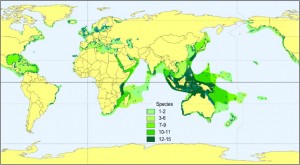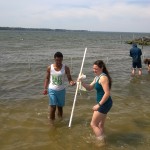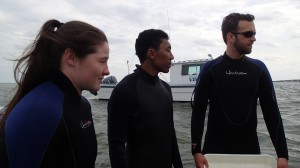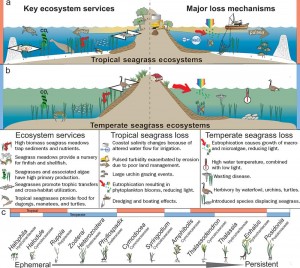Importance of knowing how to communicate science
by Jessie Viss (College of William & Mary undergraduate, ZENtern)
My bags are packed, my first hostel booked, and a pretty decent travel playlist has been downloaded to my iPod—I’m just about ready to head off to Portugal to work at the ZEN site there. Before this semester I didn’t even have a valid passport, and the farthest from home I’d ever been was when I left California to go to school in Virginia.
Needless to say I’m pretty excited about the prospect of spending two and a half months in Faro. The funny thing is, while I’ve always had a burning desire to see the world, that isn’t what’s got me practically giddy with excitement. No, what I’m most thrilled about is actually the work I’ll be doing this summer.
Throughout last semester we learned the methods for the different experiments that’ll be done across all the ZEN sites over the summer. While getting to go into the field made that class by far my favorite, the frigid waters made it so that the stars of the show were pretty scarce. But now we have the opportunity to really put into practice the procedures we’ve learned, to gather data that might test the theories of the papers we’ve read, to play a very small role in research that is of growing importance given the global trends indicating a decline in Zostera marina, so on the eve of my departure I think I’m within my bounds to geek out just a little.
My mom, on the other hand, is somewhat less enthused. Don’t get me wrong, she’s proud of me as only a mother can be, but is fairly uninterested in the scientific implications of the research. She’s been telling people I’ve landed an internship that has me spending my summer watching the grass grow. No attempts at explanation could convince her to phrase it any other way until one day the parents of a girl I went to elementary school with came into the restaurant where she works. They got to talking with her, and mentioned how their daughter also had a summer internship, working to preserve salmon populations in the delta that dominates the part of California we come from. Suddenly “watching grass grow” became an inadequate explanation, and when she got home mom asked just what exactly I’d be doing.
“Well there’s the podsicle experiment for one,” I began, “See, we take a small rod with a tether tied to it, glue some bait and put them out in the field for 24 hours.”
“Wait, what do you glue to these…popsicles…?”
“Podsicles, because we glue amphipods—little bug like things—to them to test relative predation rates,” I explained.
“And then what? Leave them out there in the water to get eaten?”
“Well—“
“So while Regina is out there saving the fishes you’re going to be gluing bugs to string??”
“Mom no, that’s not it. We’re testing how much predation there is at each site and perhaps the relative impacts of top-down processes—“
“I just can’t believe I raised a little mad scientist. Sure, now it’s just sea bugs, but how long until you’re in a white lab coat laughing maniacally and gluing people to rods.”
She was kidding, but has since gone back to telling people I’ll be watching grass grow. Seagrass, Mom. Maybe through my blog posts, and by the time I return from my ZENternship, I’ll be better able to show her the importance of the work I’m contributing to this summer.
Jessie is a rising junior at the College of William and Mary. She will be working with Dr. Aschwin Engelen in Portugal for her ZENternship this summer. Jessie is originally from California and this summer marks her first time traveling abroad.
Jessie was on the plane to Portugal while this post was undergoing final revisions, so, Jessie’s mom and parents of all of the ZENterns, this one’s for you:

Seagrasses are diverse and found all over the world (image courtesy of Short et al. 2007: Global Seagrass Research Methods)
“Seagrass beds are an important, valuable, and widespread habitat that provide many important services to humanity. They contain many different species of plants and animals, including fishes and crabs that one day will end up our dinner plates. They help soak up the excess nutrients from fertilizers and waste that find their way into coastal waterways. Seagrasses also hold the soil together, which prevents erosion and lessens the impacts of coastal storms. They even help combat the effects of global climate change by capturing carbon, preventing it from accumulating in the atmosphere. As such, it’s vitally important that we understand what factors promote healthy seagrass beds.
The purpose of the Zostera Experiment Network is to, quite simply, understand how seagrass beds work. We will measure a suite of variables – some of them related to the environment, like temperature, salinity, and location, and some of them related to biology, like the number and diversity of animals found in the grass beds. We will relate these variables to inform our predictions about how seagrass beds function. By partnering with institutions all over the world, we can evaluate these predictions generally. ZEN represents an unprecedented effort to link process to function in a coastal habitat. Ultimately, the information obtained from ZEN will aid us in protecting and globally conserving this ecosystem, so it can continue to provide the services listed above.”





Comments are closed.